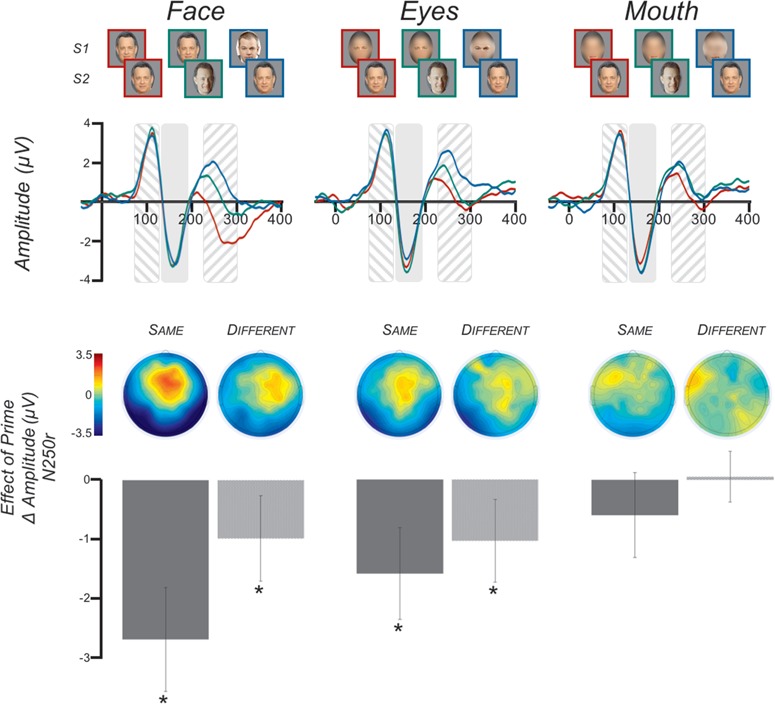Fig. 1.

Study 1 Stimuli and ERP results. (FIRST ROW) The nine trial types used in Study 1 were three levels of prime (same, different, none) × three levels of feature (faces, eyes, mouth). (SECOND ROW) Grand-average ERPs (N = 24) across electrodes P8, P10, TP8, P7, P9, TP7. The time period of the P100 is indicated by the area with downward slashes. NOTE: this figure displays the waveform across the electrodes listed above, whereas the P100 statistics were done on the average waveform of electrodes C1, Cz, C2. The time period of the N170 is indicated by the solid shaded area. The time period of the N250r is indicated by the area with upward slashes. The waveforms are color coded such that RED is the primesame condition, GREEN is the primedifferent condition and BLUE is the primenone condition. (THIRD ROW) Topographical maps of the N250r priming effect at each cell of the feature factor. The ‘Same’ maps display the primesamevs primenone simple contrast, whereas the ‘Different’ maps display the primedifferentvs primenone contrast. (FOURTH ROW) N250r mean amplitude differences across electrodes P8, P10, TP8, P7, P9, TP7. The contrasts displayed are the same as for the topographical maps. Error bars indicate the 95% confidence interval. Asterisks indicate significant priming effects, P < 0.05.
